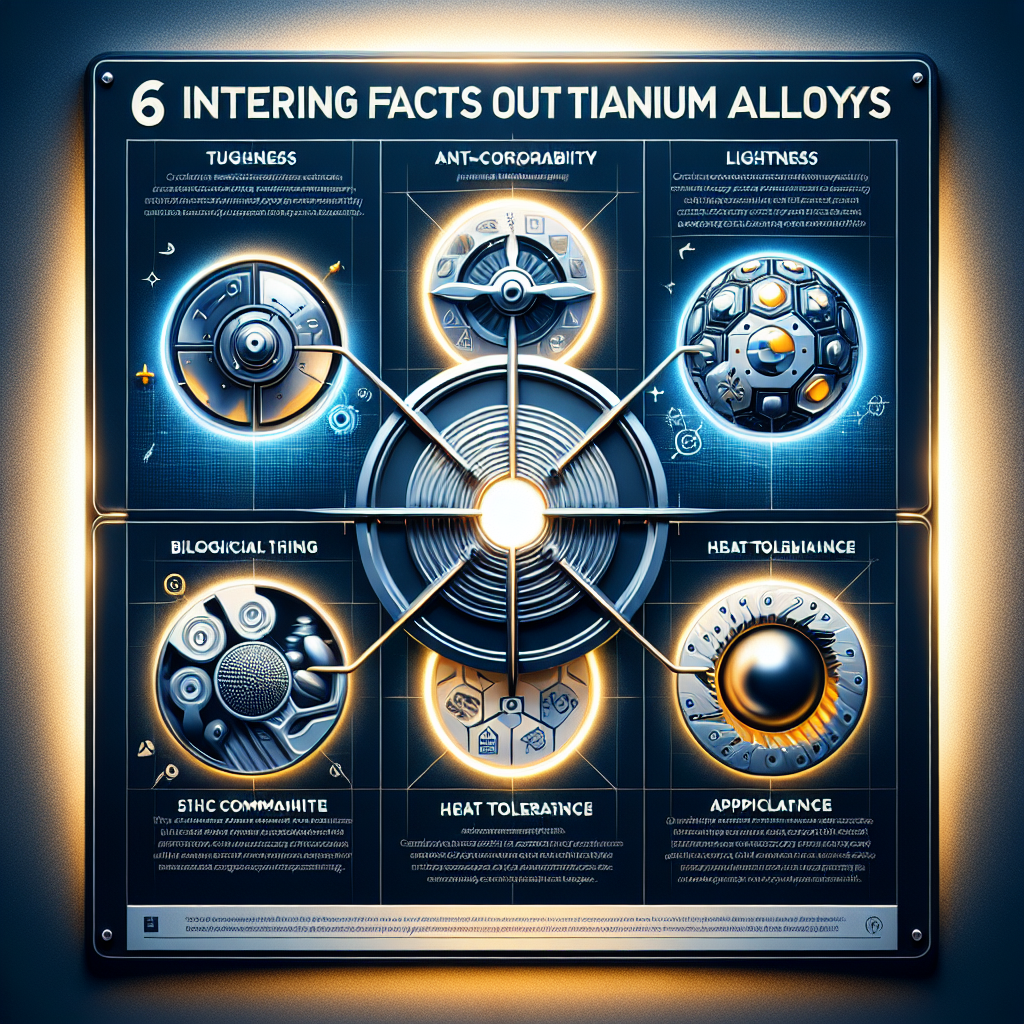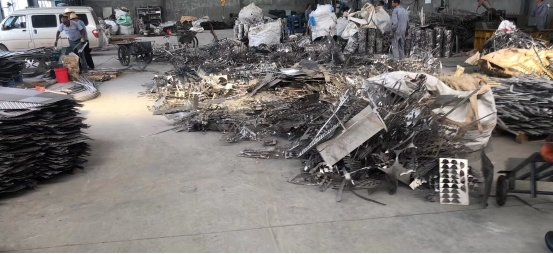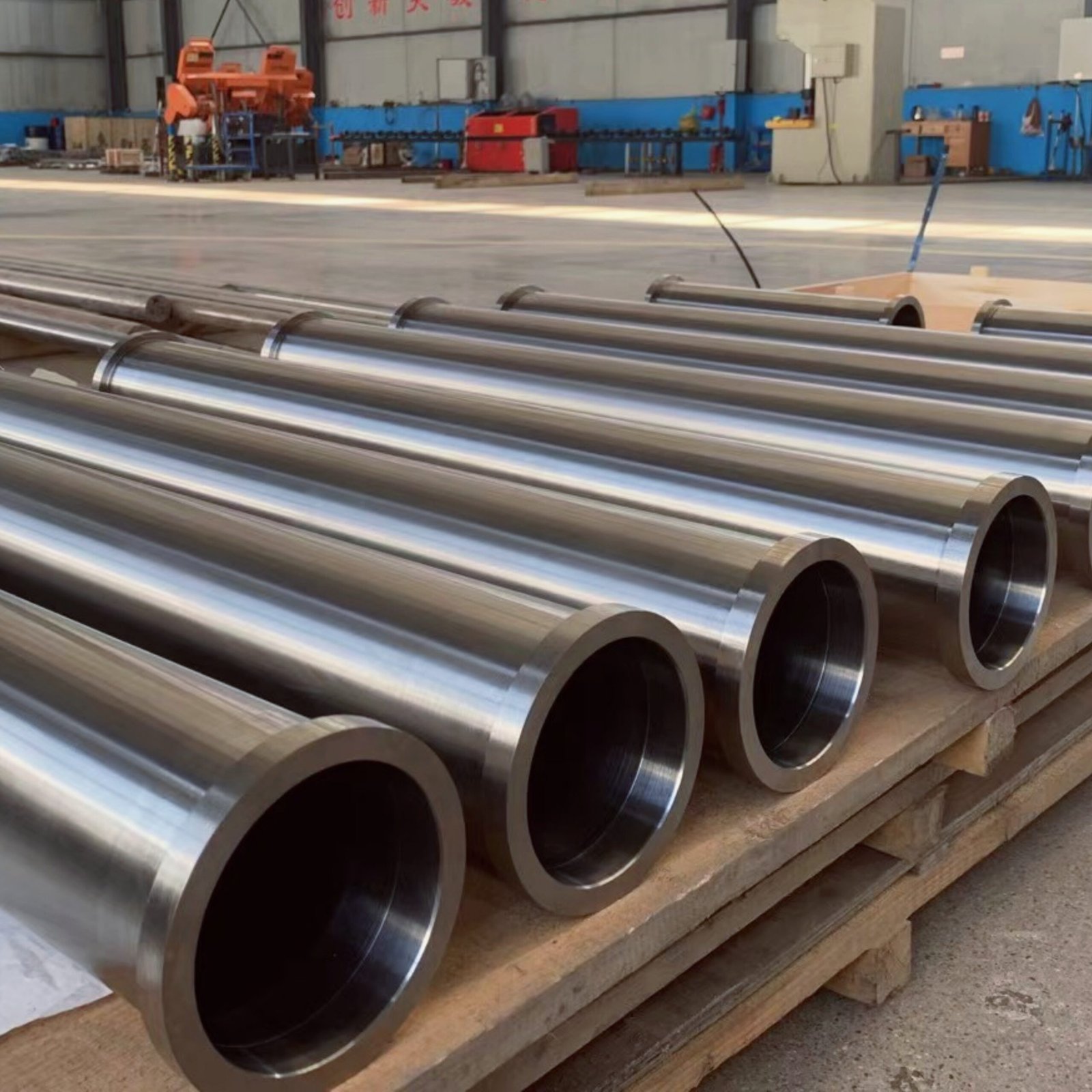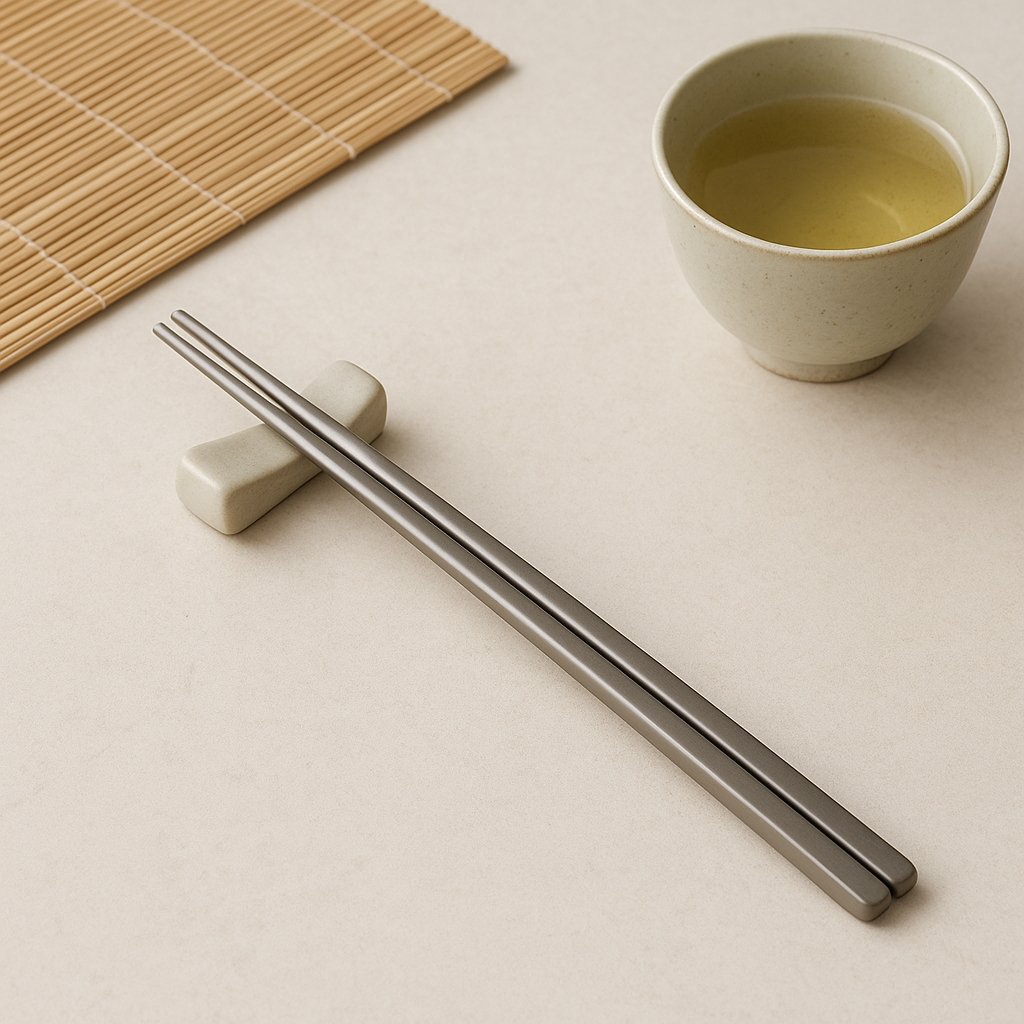1.The Enigmatic World of Titanium Alloys
In the vast landscape of modern materials, titanium alloys stand as a beacon of innovation and mystery.Revered for their unmatched strength, lightweight nature, and extraordinary resistance to corrosion,these alloys are integral to advanced technology.Yet beneath this story lies a secretive world known only to a few.
Clandestine developments and undisclosed applications define the journey of titanium alloys. From secret military labs to cutting-edge aerospace, these alloys’ history is as intricate as their composition. Experts rarely openly discuss challenges, testing methods, and production practices, adding mystery to these alloys.
In tThis article explores seven lesser-known facts about titanium alloys, often hidden from public view. These insights broaden understanding of titanium alloys and reveal forces driving their evolution. This world of innovation and secrecy constantly pushes the boundaries of known knowledge.

2.The Hidden Origins of Modern Titanium Alloys
Titanium alloys' story begins not in modern labs but in the shadows of World War II.As the world plunged into conflict, the race for superior materials that could withstand the rigors of war intensified. In this rush, titanium—then little-known—caught the attention of military scientists and engineers. What followed was a series of secretive developments that would forever change the landscape of materials science.
Titanium’s combination of strength and lightness made it ideal for military use, especially in aircraft and ships. However, the process of refining titanium into usable alloys was fraught with difficulties. The metal’s reactivity, especially at high temperatures, made traditional refining methods ineffective. Early large-scale titanium production was secretive, driven by the need to outpace rivals in war technology.
A pivotal yet little-known moment for titanium alloys happened during the U.S. Manhattan Project. Though focused on nuclear weapons, the Manhattan Project spurred materials science advances, including the Kroll process development.The Kroll process, still in use, enabled titanium extraction from ores, forming the foundation of today’s titanium industry.The process itself was initially classified, reflecting its strategic importance.
Meanwhile, the Soviet Union secretly pursued titanium research, driven by similar wartime goals. The Cold War intensified this secret race, with both superpowers investing heavily in titanium alloy development for aerospace.This period of intense secrecy and innovation led to the birth of the modern titanium alloys we know today.Even now, the origins of some titanium alloys remain cloaked in secrecy, with certain formulations and applications still classified.Covert agendas, secret operations, and the pursuit of dominance filled titanium’s early history, still influencing its development today.
3.The Unseen Challenges of Alloying Titanium
Creating titanium alloys is no simple task. The process is a delicate dance of chemistry and metallurgy, where even the slightest miscalculation can lead to catastrophic failures.People celebrate the end products, but experts rarely discuss the unseen challenges involved in creating them.
One of the primary difficulties in alloying titanium lies in its reactivity. Titanium’s affinity for oxygen, nitrogen, and carbon at high temperatures makes it exceptionally challenging to work with. These elements can easily contaminate the alloy, leading to embrittlement and reduced performance. Alloying requires tightly controlled environments, usually under vacuum or inert gases, to avoid unwanted reactions. Even a small deviation from these conditions can result in a batch of alloy that is unusable.
Another challenge is the precise blending of alloying elements. Manufacturers often combine titanium with metals like aluminum, vanadium, and molybdenum to enhance its properties. Operators add these elements in exact proportions and meticulously control the temperature throughout the process. The alloying temperature for titanium is significantly higher than that for most other metals, often exceeding 1600°C. At these temperatures, maintaining uniformity in the alloy becomes increasingly difficult, requiring sophisticated equipment and experienced metallurgists.
Moreover, the unique crystalline structure of titanium alloys adds another layer of complexity. Titanium has an allotropic nature, meaning it can exist in different crystal structures depending on the temperature. Engineers carefully manage phase transitions in alloying to prevent defects like cracking or weak grain boundaries.
The hidden challenges of titanium alloying blend art with science.The expertise required to create high-performance materials essential for advanced technology becomes clear through these unseen struggles. Without this deep understanding and precision, the remarkable qualities of titanium alloys would remain out of reach.
4.The Secretive World of Titanium Alloy Testing
Titanium alloys undergo rigorous, often secretive, testing to ensure they’re reliable for critical applications. Titanium alloy testing uses specialized methods and extreme conditions, pushing the material to its absolute limits. What happens in these testing facilities often remains behind closed doors, known only to a select group of experts.
One of the most secretive aspects of titanium alloy testing is the use of non-destructive testing (NDT) techniques. Technicians use methods such as ultrasonic testing (UT) and radiographic testing (RT) to detect internal flaws without damaging the material. These methods inspect titanium alloys for aerospace, military, and medical uses, where even small defects could cause failures.Test parameters and results, especially for military or aerospace uses, are often classified, keeping the process largely secret.
Beyond standard NDT, titanium alloys undergo extreme environment testing, facing conditions far beyond typical use. This includes testing in high-pressure chambers, cryogenic temperatures, and even simulated space conditions. The goal is to assess alloy behavior under extreme conditions, ensuring reliability in mission-critical applications. Experts seldom disclose test details, including conditions and outcomes, especially for alloys used in advanced tech or defense projects.
Moreover, the testing of titanium alloys often involves proprietary techniques developed by individual companies or research institutions. The organization closely guards these methods, which give it a competitive edge, and only insiders know them. This level of confidentiality ensures that the specific strengths and capabilities of a company’s titanium alloys remain hidden from competitors.
The organization’s secrecy around titanium alloy testing highlights their crucial role in advanced global technologies. While general testing principles are public, experts hide exact procedures and results, adding mystery to titanium alloys.
5.The Dark Side of Titanium Recycling
Titanium is often lauded for its recyclability, with advocates pointing to the environmental benefits of reusing this valuable metal. However, beneath the surface of this green narrative lies a darker, less discussed reality. Titanium recycling, though environmentally beneficial, poses challenges and hidden costs, especially where material integrity is critical.
One of the major issues in titanium recycling is the risk of contamination. Elements like oxygen, nitrogen, and carbon often react with titanium during the recycling process. Trace contaminants can degrade alloy properties, risking performance reductions or even failures in critical applications. Recycling is technically challenging and costly, needing strict controls to ensure titanium purity.
Another hidden aspect of titanium recycling is the energy-intensive nature of the process. Titanium recycling uses less energy than mining but still demands high energy to meet stringent quality standards.This energy use reduces recycling’s environmental benefits, making it less “green” than it seems.
Moreover, the economic pressures in the titanium industry can lead to questionable practices.Reports indicate that companies sometimes mix recycled titanium with lower-grade materials or process it without strict quality controls. Such practices can produce inferior products labeled as high-quality alloys, risking user safety and industry reputation.

The dark side of titanium recycling is a complex issue that highlights the trade-offs between sustainability, cost, and quality.Recycling is vital but challenging, with issues managed carefully to meet high standards.Balancing these factors is crucial to making titanium recycling sustainable without losing its key properties.
6.The Confidential Uses in Cutting-Edge Technology
Industries widely recognize titanium alloys for aerospace and medical uses, yet they use them in some intriguing applications that remain undisclosed. Confidential uses involve cutting-edge technology, leveraging titanium’s properties in undisclosed, strategic ways.One of the most secretive aspects of titanium alloy applications lies in advanced aerospace and defense projects. Titanium alloys are integral to the development of next-generation aircraft, spacecraft, and unmanned aerial vehicles (UAVs), where their strength-to-weight ratio and resistance to extreme conditions are critical. However, the specific designs and technologies that incorporate titanium are often classified, as they play a key role in maintaining a technological edge in global defense capabilities. Companies closely guard the exact composition of certain titanium alloys used in stealth technology or hypersonic vehicles to prevent competitors from replicating these advancements.
In addition to aerospace, titanium alloys are increasingly finding their way into the rapidly evolving field of space exploration. As space agencies and companies push boundaries, titanium’s durability suits it for satellite components and deep-space probes.Many projects, especially military or satellite-based, are secretive, with material details strictly undisclosed.
Beyond aerospace, titanium alloys are being explored in quantum computing and advanced medical devices.Titanium’s biocompatibility and durability under extreme conditions drive innovations in experimental technologies and prototype devices.Confidentiality keeps titanium’s role in these projects undisclosed, deepening the mystery around its capabilities.
These confidential uses of titanium alloys highlight the material’s versatility and strategic importance in cutting-edge technology. Titanium’s true potential may remain hidden in unrevealed projects, despite impressive known applications.
7.The Cost Behind the Curtain
Titanium’s exceptional properties bring high costs, often masked by its high-tech reputation. Behind the scenes, titanium’s production poses financial, logistical, and economic challenges rarely discussed openly.
The first hidden cost is the sheer expense of raw titanium. Extracting titanium from its ore is an energy-intensive process, and the metal’s reactivity requires specialized and costly equipment to prevent contamination. Even before alloying begins, the cost of pure titanium can be several times that of other metals, making it a premium material from the outset.
In addition to raw material costs, the alloying process itself is expensive and resource-intensive. The need for controlled environments, high temperatures, and precise measurements means that producing titanium alloys requires advanced technology and highly skilled labor. These factors drive up production costs, and companies often pass them on to end users, particularly in industries demanding the highest standards of quality and performance.
Companies tightly control the global supply chain for titanium, and geopolitical factors significantly impact pricing. Countries with large reserves of titanium ores, such as Russia and China, can influence market prices, while strategic stockpiling by governments or corporations can lead to price fluctuations. These behind-the-scenes maneuvers often remain hidden from public view but have a direct impact on the cost of titanium products.
Finally, the cost of maintaining the quality of titanium alloys over time is substantial. Ensuring that titanium components meet strict regulatory and safety standards, especially in aerospace and medical applications, involves ongoing testing, certification, and compliance efforts—all of which add to the overall expense.
The true cost of titanium alloys lies not only in the price tag but also in the intricate and often secretive economic factors that influence their production and availability. Understanding these hidden costs provides a more complete picture of why titanium alloys, despite their advantages, remain a costly investment.
8.Conclusion: The Continuing Mystique of Titanium Alloys
Titanium alloys occupy a unique place in the world of materials science—both celebrated for their remarkable properties and shrouded in an aura of mystery. As we have explored, there is far more to these alloys than meets the eye. From their clandestine origins in military research to the intricate challenges of alloying and the hidden costs behind their production, titanium alloys are as much about the secrets they hold as the advantages they offer.
The world of titanium alloys is one where innovation meets secrecy, where cutting-edge technology is quietly advanced behind closed doors. The confidential uses of these alloys in aerospace, defense, and emerging technologies underscore their strategic importance, while the dark side of titanium recycling and the hidden economic factors reveal the complexities that lie beneath the surface.
Yet, despite these challenges and the veil of secrecy that surrounds them, titanium alloys continue to push the boundaries of what is possible in engineering and technology. Their role in the future of high-performance materials is assured, even as much about them remains undisclosed.
As we look ahead, the mystique of titanium alloys is likely to deepen. New applications, technologies, and perhaps even new secrets will emerge, further enhancing the allure of this extraordinary material. For those who work with titanium alloys, understanding both their strengths and their mysteries is key to unlocking their full potential—a potential that is still being discovered, even today.
In a world where information is often at our fingertips, titanium alloys remind us that some secrets are worth keeping.
Share this article
Written by : 钛合金网
Follow us
Table Of Content



